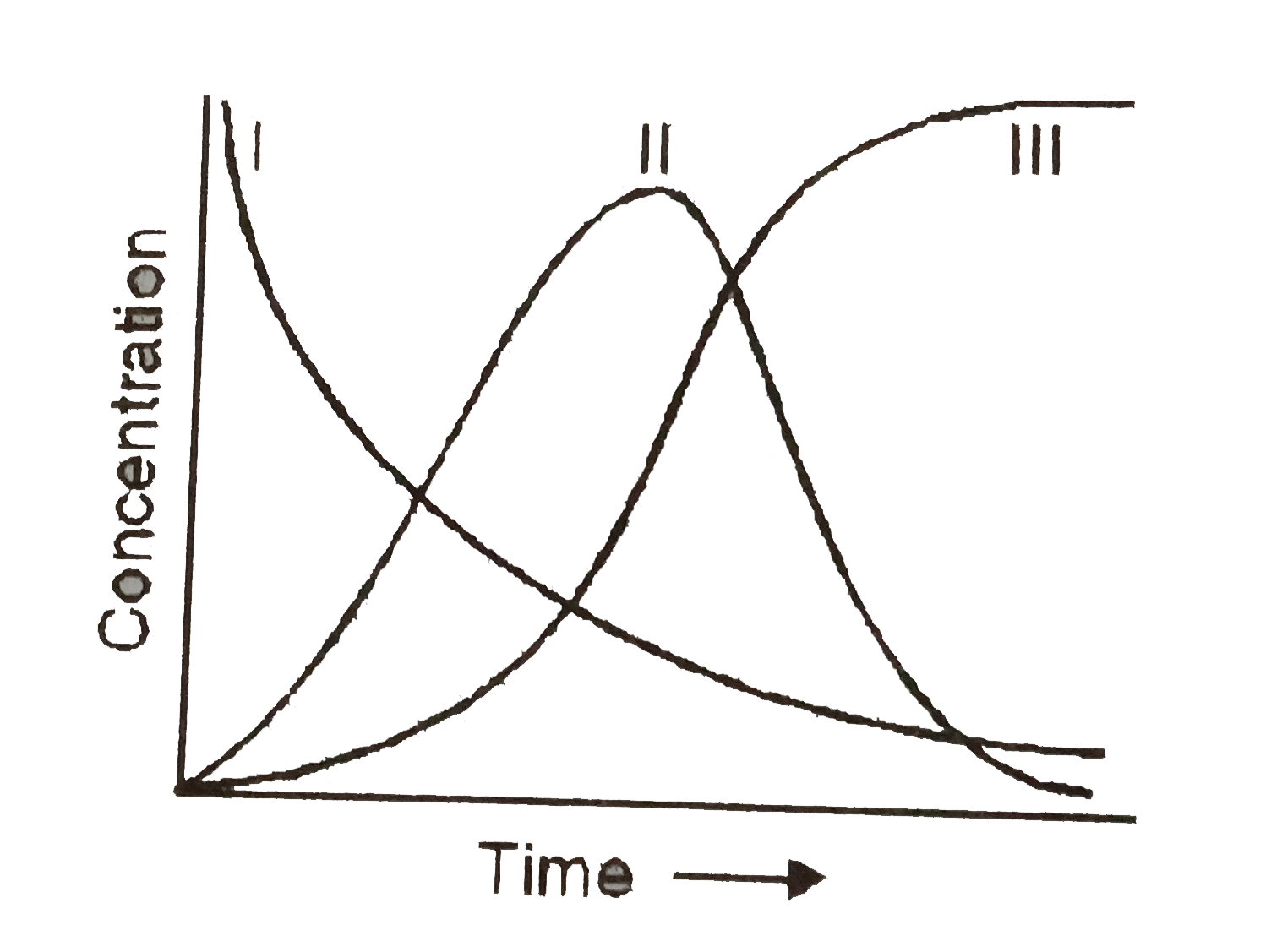For a consecutive reaction R1k1−−→R2k2−−→R3, if initial concentration of R1 is 100 M and k1:k2=1:0.15, calculate the value of tmax(Given k1=4.0×10−2min−1).
tmax represents time corresponding to maximum concentration of the intermediate R2
The value of tmax is given by the relation
tmax=2.303(k1−k2)logk1k2
k1=4.0×10−2
∴k2=4.0×10−2×0.15=6×10−3
∴tmax=2.303(4−0.6)10−2log4×10−26×10−3=2.3033.4×10−2×0.82=55.6 min
Topper's Solved these Questions
- BOOK - PRADEEPCHAPTER - CHEMICAL KINETICSEXERCISE - VALUE BASED QUESTIONS (WITH ANSWERS)2videos
CHEMICAL KINETICS
- BOOK - PRADEEPCHAPTER - CHEMICAL KINETICSEXERCISE - COMPETITION FOCUS (JEE(Main and Advanced)/Medical Entrance) (I. Multiple Choice Questions)75videos
CHEMICAL KINETICS
- BOOK - PRADEEPCHAPTER - CHEMICAL KINETICSEXERCISE - HIGHER ORDER THINKING SKILLS (QUESTIONS AND PROBLEMS WITH ANSWERS/SOLUTIONS) HOTS QUESTIONS7videos
CHEMICAL KINETICS
- BOOK - PRADEEPCHAPTER - BIOMOLECULES EXERCISE - IMPORTANT QUESTIONS (FOR BOARD EXAMINATION)25videos
BIOMOLECULES
- BOOK - PRADEEPCHAPTER - CHEMISTRY IN EVERYDAY LIFE EXERCISE - IMPORTANT QUESTION FOR BOARD EXAMINATION30videos
CHEMISTRY IN EVERYDAY LIFE
Similar Questions
Knowledge Check
- Question 1 - Select One
A consecutive reaction, AK1−−→BK2−−→C is characterised by:
AMaximum in the concentration of ABMaximum in the concentration of BCMaximum in the concentration of CDHighly exothermicity - Question 2 - Select One
For the consecutive unimolecular first order reaction Ak1−−→Rk2−−→S, the concentration of component A, CA at any time t is given by
AC=CA0e(k1+k2)tBCA=CA0e−(k1+k2)tCCA=CA0e−k1tDCA=CA0ek1t - Question 3 - Select One or More
For a reversible reaction Ak1=4×102s−1⇐======⇒k2=2×102s−1B initial concentration of A is 21 mol L−1 . Select the correct statement:
AEquilibrium concentration of A is 14 mol L−1BEquilibrium conentration of B is 14 mol L−1.CThe concentration of A reduce by 50% of equilibrium concentration after 11.55 sec .DThe concentration of A reduce to 50% after 23.1 sec.
For the sequential reaction:
A.k1=0.2min−1−−−−−−−−→Bk2=0.2min−1−−−−−−−−→C
t=0aM 0 0
The time (in min) at which concentration of B becomes maximum is :View SolutionFor the consecutive unimolecular-type first-order reaction Ak1−−→Rk2−−→S, the concentration of component R, CR at any time t is given by -
CR=COAK1[e−k1t(k2−k1)+e−k2t(k1−k2)]
if CA=CAO,CR=CRO=0 at t=0
The time at which the maximum concentration of R occurs is -View SolutionFor a reaction Akr=0.6M−1min−−−−−−−−→2B
starting with 1 M of 'A' only, concentration of B (in M) after 100 sec. and 200 sec. is respectively?View SolutionFor the two step reaction in which both the steps are first order

Rk1−−→I
Ik2−−→P
the rate of change of concentration of I is given by the plotView SolutionRate of the given reaction,
(1) A+Br1=0.05−−−−→X
(2) X+Br2=0.89−−−−→Y
(3) Y+Ar3=0.001−−−−−→AY
(4) AY+Br4=0.10−−−−→AYB will be determined byView Solution

